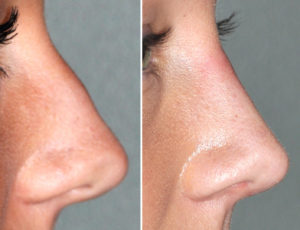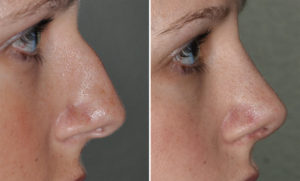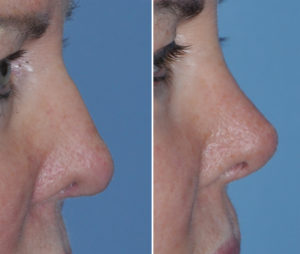The shape of the nose is as varied amongst people as the weather is on any one day around the world. While not quite as distinct as a fingerprint, one’s nose shape is fairly unique in each individual. But despite this tremendous diversity in appearance, there are certain nasal shapes that many patients strive to achieve regardless of what their natural nose looks like. This creates a real challenge for any rhinoplasty surgeon in trying to achieve patient expectations.
But one aspect of nasal shape that is the least controversial and can be argued to be the most straightforward to change is the of the dorsal line. Viewed primarily in the side view the dorsal line of the nose is the profile shape from the top of the nose down to the tip along the skin. It can only have have three different profiles, straight, convex or concave. While the dorsal line does have aesthetic considerations in the front view, these do not have quite the significance as how it appears in the profile and oblique facial views.



Determine before surgery what type of dorsal line profile a patients wants is one of the most straightforward imaging changes to make. Its impact affects the entire rhinoplasty result and is usually one of the top three types of changes a patient wants to surgically make to their nose.
Dr. Barry Eppley
Indianapolis, Indiana


